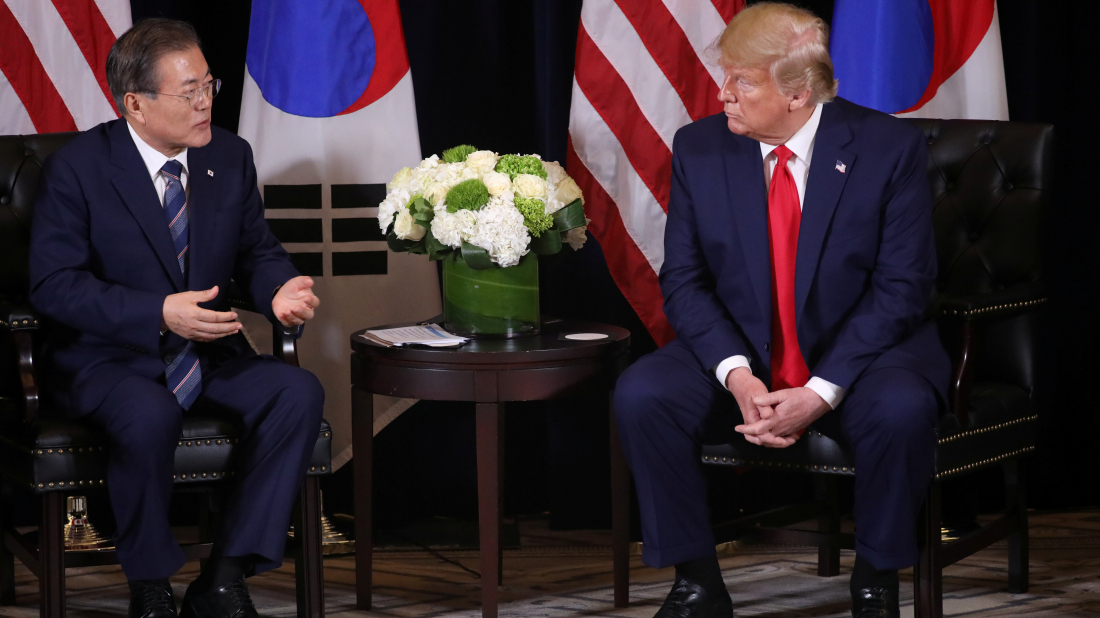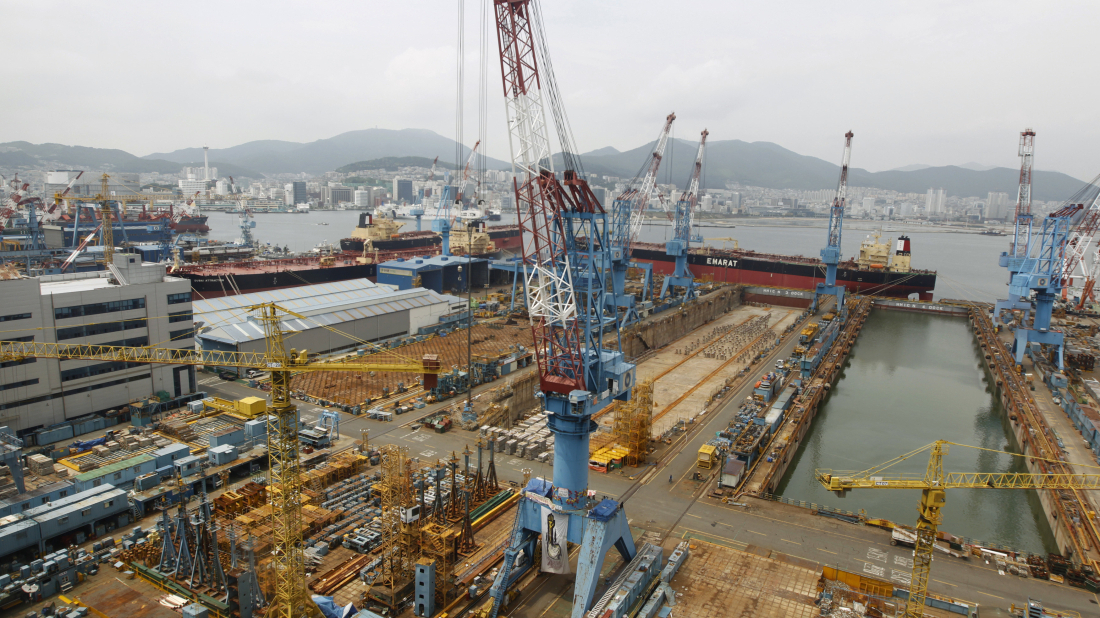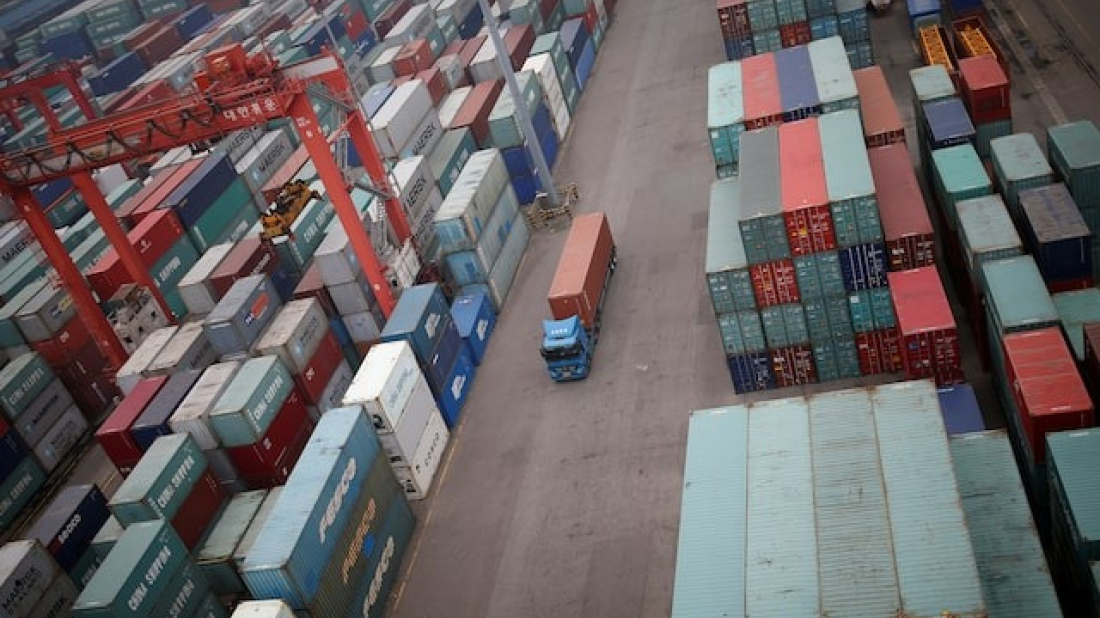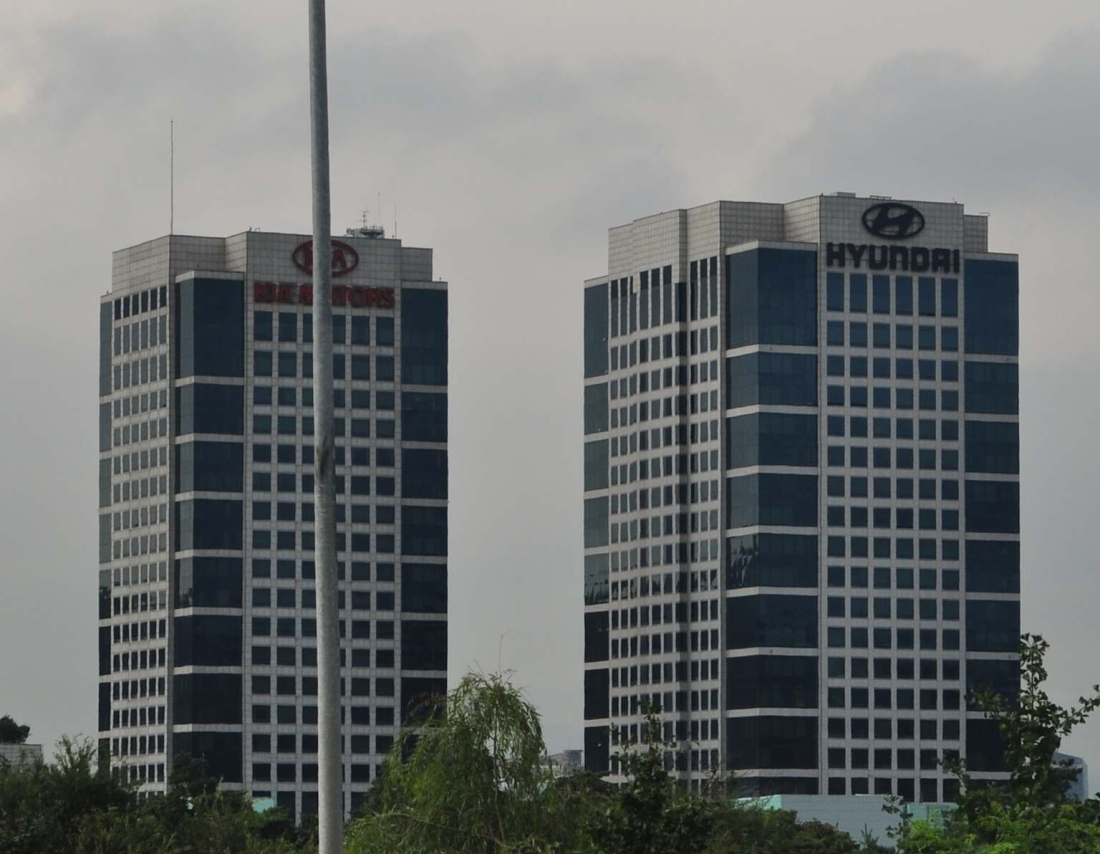One dead, three missing after migrant boat sinks off Samos
One person has died and three remain missing after a migrant boat sank off the Greek island of Samos on Monday, authorities said....
President Donald Trump announced on 30 July that the United States and South Korea have reached a "full and complete trade deal" that establishes a 15% tariff on South Korean exports while securing $450 billion in combined investments and energy purchases from Seoul.
The agreement, finalized just days before Trump's 1 August deadline for implementing higher tariffs, represents one of the most significant bilateral trade arrangements of his second presidency and provides crucial economic relief for South Korea's export-dependent economy.

The deal matches similar agreements Trump recently negotiated with Japan and the European Union, all featuring the 15% baseline tariff rate that has become the administration's standard for major trading partners. South Korean President Lee Jae-myung, who took office in June following a snap election, described the agreement as eliminating "key uncertainties facing Korean exporters" and ensuring favourable competitive conditions in the U.S. market.
Agreement Details and Financial Commitments
Tariff Structure and Trade Terms
Under the new arrangement, South Korea will face a 15% tariff on its exports to the United States, a significant reduction from the 25% rate Trump had threatened to implement by 1 August. This represents a strategic compromise that places South Korea on equal footing with Japan and the European Union, both of which secured similar 15% rates in recent negotiations .
The agreement stipulates that American exports to South Korea will face no reciprocal tariffs, with Trump emphasizing that South Korea has agreed to be "completely OPEN TO TRADE with the United States" and will accept American products including "Cars and Trucks, Agriculture, etc."
Despite these broad commitments, South Korean officials confirmed that sensitive agricultural sectors, particularly rice and beef markets, remain protected from further liberalization .
Investment and Energy Commitments
The centerpiece of the agreement is South Korea's commitment to a $350 billion investment fund in U.S. projects, which Trump stated will be "owned and controlled by the United States, and selected by myself, as President". South Korean officials provided additional detail, explaining that $150 billion will be dedicated specifically to supporting Korean companies entering the U.S. shipbuilding industry, while the remaining $200 billion will focus on semiconductors, nuclear power, batteries, and biologics.

Additionally, South Korea has agreed to purchase $100 billion worth of American energy products, including liquefied natural gas (LNG), over the next 3.5 years according to U.S. Commerce Secretary Howard Lutnick. The combined $450 billion commitment represents one of the largest investment pledges secured by the Trump administration in its bilateral trade negotiations.
Kim Yong-beom, head of South Korea's Presidential Policy Office, clarified that the investment structure will primarily consist of loans and guarantees rather than direct equity investments, and will include both new commitments and existing investment plans by South Korean companies.
Historical Context and Trade Relationship Evolution
The KORUS FTA Foundation
The current agreement builds upon the existing U.S.-Korea Free Trade Agreement (KORUS FTA), which entered into force in March 2012 after years of negotiations that began in 2006. The KORUS FTA, originally designed to eliminate 95% of tariffs between the two countries, has undergone several modifications, most notably during Trump's first presidency when limited amendments took effect in 2019.
The original KORUS FTA was considered the most commercially significant U.S. trade agreement since NAFTA, given South Korea's status as the world's tenth-largest economy with a GDP approaching $1 trillion.
However, the agreement faced criticism during Trump's first term due to the growing U.S. trade deficit with South Korea, which increased by 75% in goods trade from $13.2 billion to $23.1 billion between 2012 and 2017.

Recent Trade Tensions and Tariff Implementation
The path to this agreement was marked by escalating trade tensions throughout 2025. In April, Trump implemented his "Liberation Day" tariff policy, initially imposing a 25% tariff on South Korean exports alongside similar measures targeting other major trading partners. These tariffs were part of Trump's broader "reciprocal tariff" strategy, designed to address what his administration characterized as unfair trading practices and large bilateral trade deficits.
The economic impact was immediate and severe. South Korean exports to the United States declined by 8.1% year-over-year by May, with particularly significant effects on the automotive, steel, and electronics sectors. Korea's GDP contracted by 0.1% in the first quarter of 2025, primarily driven by reduced exports, highlighting the critical importance of reaching a trade agreement 2022.
Industry Impact and Economic Implications
Automotive Sector Relief
The automotive industry, which represents South Korea's largest export sector to the United States, stands to benefit significantly from the agreement. Under the new terms, tariffs on South Korean vehicles will be reduced from 25% to 15%, aligning with rates applied to Japanese and European competitors. This provides crucial relief to Hyundai Motor Company and Kia Corporation, which exported $34.7 billion worth of vehicles to the United States in 2024, accounting for nearly half of South Korea's total automotive exports.

The automotive sector's importance extends beyond direct exports, as it employs approximately 335,600 people in South Korea and supports extensive supply chain networks. Industry analysts had warned that sustained high tariffs could force major restructuring and potential job losses, making the tariff reduction a critical achievement for the Lee administration.
Technology and Semiconductor Provisions
The agreement provides important protections for South Korea's semiconductor industry, with U.S. officials confirming that South Korean firms will not be disadvantaged compared to other countries regarding upcoming tariffs on chips and pharmaceuticals. This assurance is particularly significant given that South Korea exported $10.7 billion worth of semiconductors to the United States in 2024, with Samsung and SK Hynix controlling approximately 70% of global DRAM memory chip production.

The technology provisions gain additional importance in the context of U.S.-China trade tensions and the ongoing restructuring of global supply chains. South Korean companies have made substantial investments in U.S. semiconductor and electric vehicle battery production under previous Biden administration incentives, investments that faced uncertainty under Trump's criticism of programs like the CHIPS Act and Inflation Reduction Act.
Steel and Manufacturing Impacts
While the agreement provides relief through the reduced 15% tariff rate, South Korean steel exports continue to face significant challenges under separate Section 232 national security tariffs, which remain at 50%. The steel sector, previously subject to quota arrangements, now faces higher duties but benefits from the elimination of volume restrictions.
The broader manufacturing sector, which accounts for 80% of South Korean goods exports to the United States and supported an estimated 230,000 American jobs in 2008 according to the National Association of Manufacturers, stands to benefit from reduced uncertainty and improved market access.
Political Reactions and Diplomatic Significance
South Korean Government Response
President Lee Jae-myung characterized the agreement as a major early victory for his administration, stating on Facebook that "we have crossed a big hurdle" and that the deal "eliminates key uncertainties facing Korean exporters". The agreement represents a significant diplomatic achievement for Lee, who assumed office just two months ago following the impeachment of his predecessor Yoon Suk Yeol.
The ruling Democratic Party welcomed the agreement as a "valuable achievement" of Lee's pragmatic diplomacy, with floor leader Kim Byung-kee emphasizing that it would "strengthen manufacturing cooperation and solidify the South Korea-U.S. alliance". Party officials particularly praised the protection of sensitive agricultural sectors, noting that rice and beef markets remained closed to further liberalization.
However, the main opposition People Power Party voiced concerns about the financial commitments, with interim leader Song Eon-seog noting that the combined $450 billion in investments and purchases "exceeds our foreign exchange reserves". Opposition members also raised questions about potential competitive disadvantages relative to Japan, given that both countries now face the same 15% tariff rate.
U.S. Administration Perspective
The Trump administration framed the agreement as part of its broader strategy to secure "reciprocal" trade relationships that address longstanding bilateral trade imbalances. Trump emphasized that the deal would create significant opportunities for American farmers, manufacturers, and energy producers while ensuring that South Korea accepts American products without imposing retaliatory tariffs.
Commerce Secretary Howard Lutnick highlighted the energy component, confirming that South Korean purchases of American LNG and other energy products would occur "over the next 3.5 years". The administration presented the agreement as evidence of Trump's ability to negotiate favourable terms through his tariff-based approach to trade policy.
Comparative Analysis with Other Trade Agreements
Standardized 15% Framework
The South Korea agreement follows a pattern established in Trump's recent negotiations with Japan and the European Union, all featuring the 15% tariff rate as a baseline for major trading partners. This standardization suggests the emergence of a new tier in Trump's tariff structure, positioned between the 10% universal tariff applied to most countries and the higher rates imposed on nations without negotiated agreements.
Japan's deal, announced earlier in July, included a $550 billion investment commitment, while the European Union agreed to a $600 billion investment package alongside increased energy purchases. The consistency in both tariff rates and investment requirements indicates a systematic approach to trade negotiations by the Trump administration.
Global Trade Policy Context
The agreements reflect a significant shift in U.S. trade policy from the multilateral frameworks that characterized previous administrations toward bilateral arrangements that emphasize reciprocal commitments and large-scale investment pledges. This approach has created a new template for U.S. trade relationships that combines tariff reductions with substantial financial commitments from trading partners.
The standardized 15% rate for major allies contrasts sharply with much higher rates imposed on countries without agreements. For example, India faces a 25% tariff, while China confronts a 34% rate, and several smaller economies face tariffs exceeding 40%. This tiered structure creates clear incentives for countries to negotiate bilateral agreements rather than rely on multilateral trade frameworks.
Economic Analysis and Market Response
Immediate Market Reactions
South Korean financial markets responded positively to the agreement announcement, with the KOSPI index gaining nearly 0.4% in early trading following the news. The market response reflected relief among investors who had been concerned about the potential economic impact of sustained high tariffs on South Korea's export-dependent economy.
The automotive sector, in particular, benefited from the certainty provided by the agreement. Industry analysts noted that the reduced tariff rate, while still above pre-2025 levels, provides a stable framework for planning production and investment decisions.
Long-term Economic Implications
Independent economic analysis suggests that while the agreement provides important relief from higher tariff threats, it still represents a significant increase in trade barriers compared to the virtually tariff-free environment that existed under the original KORUS FTA 1922. The 15% tariff rate, though reduced from initial threats, remains substantially higher than the 2.5% average that characterized pre-2025 trade relations.
The $350 billion investment commitment, while substantial, raises questions about implementation timelines and the specific mechanisms through which funds will be deployed. South Korean officials emphasized that the investments will leverage existing corporate plans and utilize loan and guarantee structures rather than direct government spending.
Some economists have expressed concern that the agreement, while avoiding the worst-case scenario of a 25% tariff, locks in place trade barriers that could permanently alter the bilateral economic relationship. The requirement for ongoing investment commitments also creates potential sources of future diplomatic tension if economic conditions change.
Industry-Specific Impacts and Future Outlook
Shipbuilding Sector Opportunities
The agreement's specific allocation of $150 billion toward U.S. shipbuilding cooperation represents a significant opportunity for South Korean companies to expand their presence in the American maritime industry. South Korea's shipbuilding sector, led by companies like Hyundai Heavy Industries and Samsung Heavy Industries, has faced challenges in recent years due to overcapacity and intense competition with Chinese producers.
Entry into the U.S. shipbuilding market could provide South Korean companies with access to defense contracts and commercial opportunities that have been largely dominated by domestic producers. The investment framework suggests potential partnerships that could strengthen both countries' maritime capabilities while providing South Korean firms with new revenue streams.
Energy Sector Transformation
The $100 billion commitment to purchase American energy products represents a fundamental shift in South Korea's energy import patterns. As one of the world's largest energy importers, South Korea has traditionally relied on diverse suppliers including Middle Eastern countries, Russia, and other sources.
The commitment to American LNG and other energy products could enhance South Korea's energy security while supporting Trump's goal of expanding U.S. energy exports. However, the scale of the commitment raises questions about pricing competitiveness and the potential impact on South Korea's relationships with other energy suppliers.
Technology and Innovation Cooperation
Beyond the immediate tariff and investment provisions, the agreement creates a framework for expanded cooperation in advanced technology sectors including semiconductors, biotechnology, and clean energy. This cooperation could prove particularly valuable as both countries navigate the complexities of global supply chain restructuring and technological competition with China.
The protection of South Korean semiconductor exports from additional tariffs ensures that companies like Samsung and SK Hynix can continue their substantial investments in U.S. manufacturing facilities without facing discriminatory trade barriers.
Conclusion and Strategic Implications
The U.S.-South Korea trade agreement announced by President Trump represents a significant diplomatic and economic milestone that addresses immediate concerns while establishing a framework for long-term bilateral cooperation. The 15% tariff rate, while higher than historical norms, provides predictability for South Korean exporters and avoids the more severe economic disruption that would have resulted from the threatened 25% rate.
The $450 billion in combined investment and purchase commitments creates substantial opportunities for deepened economic integration, particularly in strategic sectors like shipbuilding, semiconductors, and energy. However, the agreement also raises important questions about the sustainability of such large financial commitments and their potential impact on South Korea's broader economic relationships.
For President Lee Jae-myung, the agreement provides crucial early validation of his pragmatic diplomatic approach and helps stabilize South Korea's economy during a challenging transition period. The protection of sensitive agricultural sectors while opening opportunities in manufacturing and technology sectors reflects a balanced approach to managing domestic political pressures while securing international economic objectives.
The agreement's alignment with similar deals negotiated with Japan and the European Union suggests the emergence of a new framework for U.S. trade policy that emphasizes bilateral relationships, reciprocal commitments, and substantial investment pledges. This approach represents a significant departure from the multilateral trade frameworks that characterized previous decades and may influence global trade relationships for years to come.
Looking ahead, the successful implementation of the agreement's investment and purchase commitments will be crucial for maintaining the positive momentum in U.S.-South Korea relations. The upcoming bilateral meeting between Presidents Trump and Lee, scheduled within the next two weeks, will provide important opportunities to address implementation details and explore additional areas of cooperation.
The agreement ultimately reflects the pragmatic recognition by both countries that their economic and security interests are best served through continued cooperation, even within the constraints of Trump's more transactional approach to international trade. While the increased tariff barriers represent a departure from the ideal of free trade, the negotiated solution provides a stable foundation for the continued development of one of America's most important Pacific partnerships.
A 7.0 magnitude earthquake struck offshore near Taiwan’s north-eastern county of Yilan late on Saturday, shaking buildings across the island, including in the capital Taipei, authorities said.
Brigitte Bardot, the French actress whose barefoot mambo in And God Created Woman propelled her to international fame and reshaped female sexuality on screen, has died at the age of 91, her foundation said on Sunday.
Iran is engaged in a “comprehensive war” with the United States, Israel, and Europe, Iranian President Masoud Pezeshkian stated on Saturday.
Japan’s tourism sector has experienced a slowdown after China’s government advised its citizens to reconsider travel to Japan, following remarks by Prime Minister Sanae Takaichi regarding Taiwan.
Venezuelan President Nicolás Maduro on Sunday praised the country’s armed forces as “invincible warriors” during a year-end ceremony honouring the Bolivarian National Armed Forces, held in the coastal city of La Guaira.
Syria has introduced new banknotes, eliminating zeros and portraits in a move to strengthen national identity and restore confidence in the economy.
The Democratic Republic of Congo’s army has suspended its spokesperson after he made discriminatory remarks targeting the Tutsi minority.
Families of the Jeju Air crash victims visited the runway embankment at Muan International Airport on Monday, marking the first anniversary of the fatal accident.
One person has died and three remain missing after a migrant boat sank off the Greek island of Samos on Monday, authorities said.
Max Verstappen has been voted Formula 1’s driver of the year for a fifth straight season by team principals, despite narrowly missing out on the championship.
You can download the AnewZ application from Play Store and the App Store.

What is your opinion on this topic?
Leave the first comment